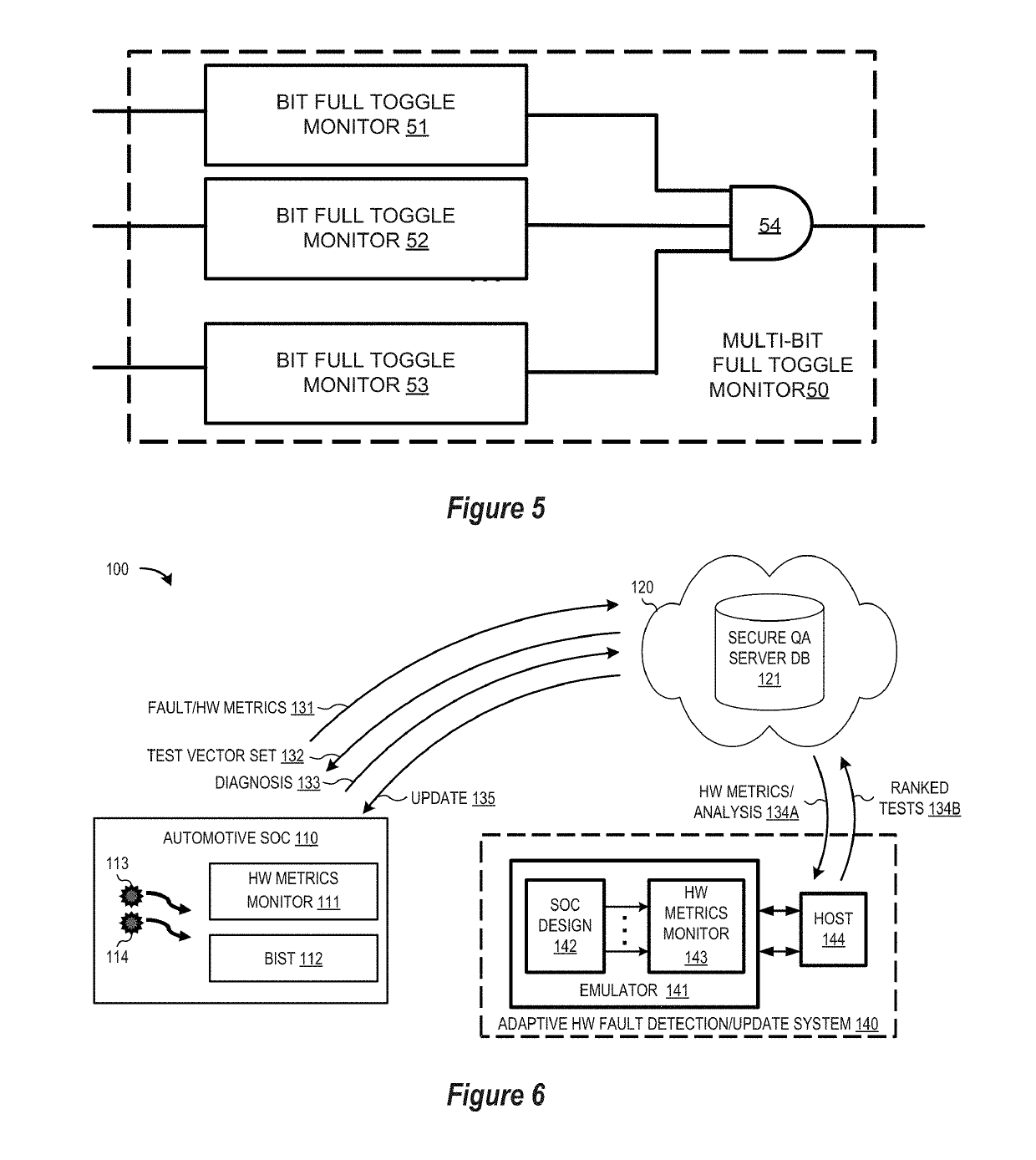System architecture method and apparatus for adaptive hardware fault detection with hardware metrics subsystem
a hardware and hardware metrics technology, applied in the field of automotive system infield hardware fault detection, can solve the problems of insufficient comprehensiveness of fault injection campaigns, inability to test for months at a time, and inability to fully integrate the fault injection campaign
- Summary
- Abstract
- Description
- Claims
- Application Information
AI Technical Summary
Benefits of technology
Problems solved by technology
Method used
Image
Examples
Embodiment Construction
[0013]An adaptive hardware fault detection apparatus, system, architecture, and methodology are described for enabling in-field diagnosis and screening of hardware faults by providing system-on-chip (SoC) devices with hardware monitor subsystems for collecting hardware metrics which are used to optimize and improve effectiveness of fault campaign testing based on actual detection results and feedback of detection hints as well as to provide proactive testing capability to SoC devices in the field. In selected example embodiments, an architecture, system, and methodology are provided for use with a simulation-based fault campaign which uses hardware metrics to prioritize the tests that are run in the simulation-based fault campaign, thereby speeding up fault detection for a fault list. In other example embodiments, an architecture, system, and methodology are provided that may be used with emulation-based fault campaigns to provide machine self-learning capability to adaptively test ...
PUM
 Login to View More
Login to View More Abstract
Description
Claims
Application Information
 Login to View More
Login to View More - R&D
- Intellectual Property
- Life Sciences
- Materials
- Tech Scout
- Unparalleled Data Quality
- Higher Quality Content
- 60% Fewer Hallucinations
Browse by: Latest US Patents, China's latest patents, Technical Efficacy Thesaurus, Application Domain, Technology Topic, Popular Technical Reports.
© 2025 PatSnap. All rights reserved.Legal|Privacy policy|Modern Slavery Act Transparency Statement|Sitemap|About US| Contact US: help@patsnap.com



